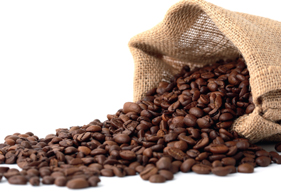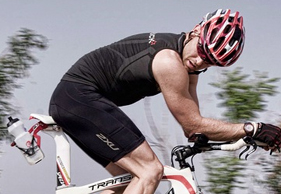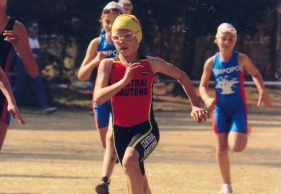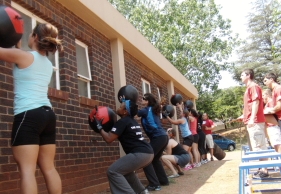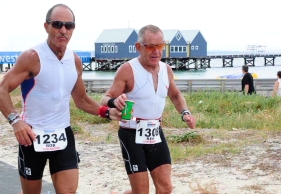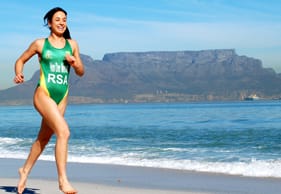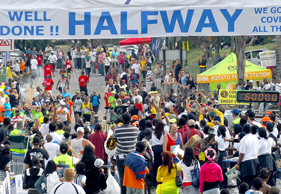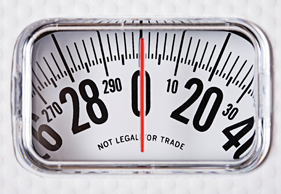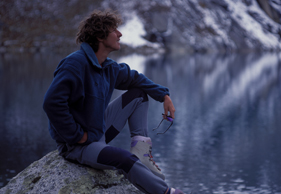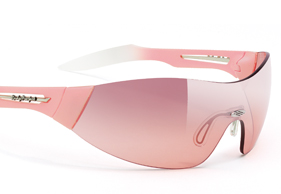JANUARY: EAT A VARIETY OF FOODS!
We have a tendency to oversimplify the food we eat, focusing on one nutrient it contains, for example cholesterol or sugar, and labelling it as ‘good’ or ‘bad’. There is no good or bad food, but rather good uses of food, e.g. banana bread may be the perfect afternoon snack for a hungry athlete before training, but may blow the calorie budget for a tiny gymnast. Also, it not unusual for athletes to take nutrition advice to extremes and avoid whole food groups at the expense of dangerously limiting their diet.
The truth is that nutrients do not exist in isolation and are not eaten individually. There is much more to a banana than just potassium, and more to eggs than just protein. Food is a complex mixture of hundreds of chemicals that interact with other chemicals in the body to achieve the desired effect.
Tips:
• Try new foods and new recipes.
• Make use of the foods in season.
• Explore different types of food in each food group, e.g. try different breads made from a variety of grains.
• Mix and match foods, e.g. avoid only pasta at night.
• Don’t banish entire food groups; rather modify their intake.
FEBRUARY: REPLACE YOUR DAILY FLUID LOSSES
Water is your most important nutrient, as dehydration can affect your performance and endanger your life. While we are mostly aware of our fluid needs on race day, we often forget about our day-to-day fluid needs. Thirst is not a good indicator of fluid requirements. You will need to work out your own fluid strategies depending on your training and environmental conditions.
Tips:
• Start a training session well hydrated. On hot days have an extra glass of water before you start.
• Have fluids available during training sessions.
• Fully rehydrate between training sessions.
• Add a cordial or some fruit juice to flavour water to encourage drinking if need be.
• Monitor body weight changes in the morning to pick up chronic dehydration.
MARCH: EAT MORE NUTRITIOUS CARBOHYDRATE-RICH FOODS
Carbohydrates play a vital role in exercise performance. It’s the main fuel for the body stored in the form of blood glucose and muscle or liver glycogen. Fully topped up stores can only last for 30 to 90 minutes, depending on the intensity of exercise and storage capacity. Therefore, carbohydrates should comprise about 50 to 60% of your daily energy intake.
Unfortunately, in our western ‘grab and go’ lifestyles, we often tend to opt for the most convenient source of carbs, which is generally of one grain only, namely wheat, e.g. breakfast cereals, bread, biscuits, pasta, couscous, etc. Not that there is necessarily anything wrong with eating wheat, especially when unrefined, but eating too much of it limits us consuming other healthy grains and their nutrients.
Tips:
• Choose from a variety of carbohydrates, not just products made from one source, i.e. choose a variety of grains and starches such as barley, brown rice, quinoa, spelt, beans, lentils, sweet potato, corn, oats, rye, etc.
• Choose low glycaemic index carbs.
• Avoid refined versions of these foods, or foods with lots of added sugar, e.g. brown rice vs white rice, sweet potato vs mashed potato, whole grain bread vs white bread, whole oats vs sweetened instant oats, etc.
APRIL: EMPHASISE HEALTHY FATS IN MODERATION
Fats are an important macronutrient in our diets as they provide a concentrated form of energy, make meals tasty, and supply essential fatty acids and fat-soluble vitamins, all important for health and fitness. All naturally occurring fats can be divided into three main groups namely: polyunsaturated fats (PUFAs), monounsaturated fats (MUFAs) and saturated fats. These fats are responsible for different roles in the body and should be eaten in different quantities. MUFAs and PUFAs should be included in small quantities and saturated fat in very small quantities, because of their links to various diseases. Other types of fat include cholesterol and trans-fatty acids. Trans-fats are artificial fats that are even more detrimental to health than saturated fat, so avoid them if possible.
Tips:
• Not more than 30% of your daily calories should come from fat.
• Most of the fat you consume (30% of total fat) should come from MUFAs, e.g. oils form canola, olive, peanut, macadamia or avocado oil; nuts like peanuts, almonds, pecans, macadamias and cashews; or peanut butter, avocados and olives.
• Make sure you get adequate amounts of both essential fatty acids in your diet, omega-3 and omega-6 PUFAs. These are fats that cannot be made by the body and are important because they form the building blocks of certain hormones that regulate essential biological function.
• On foods labels, look for fat ≤3g /100g, but at the very least ≤10g fat/100g.
MAY: MAKE THE MOST OF A PRE-EVENT MEAL
A carbohydrate-rich meal consumed two to four hours before exercise significantly increases glycogen content of the muscles and liver that have been depleted overnight. You need about two to three units of carbs two to four hours before and then again an hour before the event.
Although it varies from person to person, generally lower glycaemic index carbs are best two to four hours before, and intermediate to higher glycaemic carbs an hour before the event. The benefits of consuming lower glycaemic carbs is that it does not lead to an overproduction of insulin, which helps to prevent low blood sugar levels and may help conserve liver glycogen stores.
Tips:
• Adding small amounts of low-fat protein to your pre-event meal will help stabilise your blood sugar level, e.g. low-fat milk, yoghurt or cheese.
• A good example of a pre-event meal two to three hours before an event include: 2/3 cup of whole-wheat Pronutro with low-fat milk or a low-fat fruit smoothie. Have a 250ml carbohydrate drink 30 to 60 minutes before the event.
JUNE: TAKE NOTE OF CAFFEINE AND PERFORMANCE
Caffeine is probably one of the most widely used drugs in the world and is found naturally in things such as leaves, nuts and seeds in a number of plants. Caffeine is known to help athletes train harder and longer. It also stimulates the brain and contributes to clearer thinking and greater concentration.
There are more than 70 good studies on the use of caffeine for both endurance exercise and short-term, higher intensity exercise. The vast majority of the studies conclude that caffeine does enhance performance and makes the effort seem easier (by about 6%). The average improvement in performance is about 12%, with more benefits noticed during endurance exercise than with shorter exercise (8-20min) and a negligible amount for sprinters.
More benefits are also noticed in athletes who rarely drink coffee, hence are not tolerant to its stimulant effect. Because each runner responds differently to caffeine, do not assume you will perform better with a caffeine-boost. You might just end up nauseated, coping with a ‘coffee stomach’, or suffering from caffeine jitters at a time when you are already nervous and anxious. And be forewarned: while a morning cup of coffee can assist with a desirable bowel movement, a pre-competition mug might lead to problems during the event! Experiment during training to determine if a caffeinated beverage or plain water is your best bet.
LOOK OUT FOR PART 2 OF THIS ARTICLE IN OUR JUNE EDITION, WHERE WE WILL FEATURE TIPS TO GET YOU THROUGH JULY TO DECEMBER.

